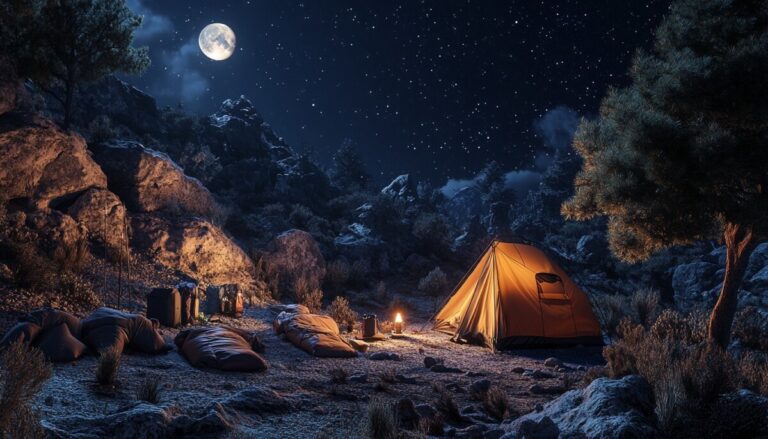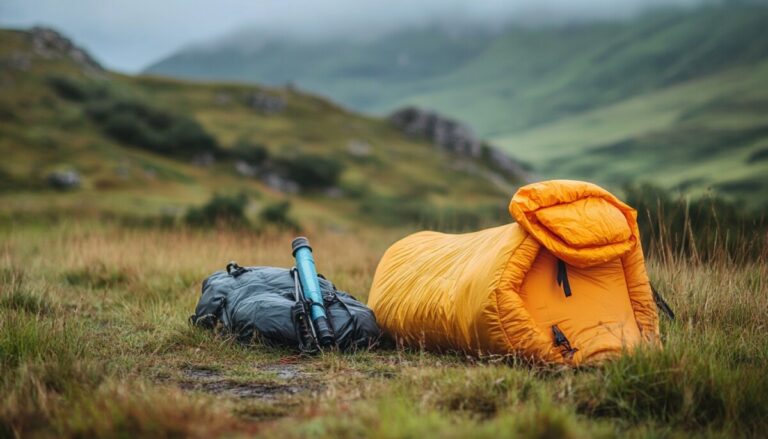Top 5 Warm and Lightweight Sleeping Bags for Outdoor Camping Trips
Introduction
Hey campers! If you’ve ever spent a night shivering in the cold or tossing and turning because your sleeping bag is too heavy, you know just how crucial it is to have the right gear. A good sleeping bag can make or break your outdoor camping experience. It’s not just about staying warm but also about ensuring you’re carrying something lightweight and easy to pack. Let’s dive into what makes a sleeping bag both warm and lightweight and why these features are essential for any outdoor adventure.
Key Features to Look for in a Sleeping Bag
Choosing the best sleeping bag for camping involves understanding a few key features. Here’s what to keep in mind:
Insulation Type: Down vs. Synthetic
- Down Insulation: Down sleeping bags are known for their excellent warmth-to-weight ratio. They pack down small and are super lightweight. However, they can be pricey and lose their insulating power when wet.
- Synthetic Insulation: Synthetic sleeping bags are bulkier but more affordable and retain warmth even when damp. They’re also easier to clean and dry faster.
Temperature Rating
Temperature ratings help you understand how cold it can get before you start feeling chilly in your sleeping bag. Always consider the lowest temperature you’ll be camping in and choose a sleeping bag that can handle it comfortably.
Weight and Packability
For backpackers, every ounce counts. Look for ultralight sleeping bags that are easy to compress and pack into a small space. Even car campers can benefit from gear that’s easy to handle and doesn’t take up much room.
Shape and Design
- Mummy Sleeping Bags: These are tapered at the feet and wider at the shoulders, offering maximum warmth and efficiency.
- Rectangular Sleeping Bags: Provide more room to move but can be less efficient in retaining heat.
Additional Features
- Hoods: Great for extra warmth around your head.
- Zippers: Look for anti-snag designs and two-way zippers for ventilation.
- Pockets: Handy for keeping small essentials like a phone or headlamp.
Top 5 Warm and Lightweight Sleeping Bags
Here’s a rundown of the top 5 sleeping bags that are both warm and lightweight, perfect for your next outdoor camping trip.
Sleeping Bag 1: Therm-a-Rest Hyperion 20F
- Detailed Description: The Hyperion 20F is known for its ultra-lightweight design and excellent warmth.
- Insulation Type and Temperature Rating: Down insulation, rated for 20 degrees Fahrenheit.
- Weight and Packability: Weighs just 1 pound 4 ounces and packs down incredibly small.
- Unique Features and Design: Box baffled construction for maximum loft and warmth.
- Pros and Cons:
- Pros: Ultra-light, warm, highly compressible.
- Cons: Expensive, down insulation loses warmth when wet.
Sleeping Bag 2: REI Co-op Magma 15
- Detailed Description: The Magma 15 offers a great balance of warmth, weight, and cost.
- Insulation Type and Temperature Rating: Down insulation, rated for 15 degrees Fahrenheit.
- Weight and Packability: Weighs around 2 pounds and compresses well.
- Unique Features and Design: Water-resistant down, mummy shape.
- Pros and Cons:
- Pros: Warm, relatively affordable for down, water-resistant.
- Cons: Slightly heavier than other down options.
Sleeping Bag 3: Big Agnes Anvil Horn 15
- Detailed Description: Known for its roomy design and integrated pad sleeve.
- Insulation Type and Temperature Rating: Down insulation, rated for 15 degrees Fahrenheit.
- Weight and Packability: Weighs around 2 pounds 9 ounces.
- Unique Features and Design: Integrated pad sleeve, roomy foot box.
- Pros and Cons:
- Pros: Roomy, integrated pad sleeve for comfort.
- Cons: Heavier, bulkier pack size.
Sleeping Bag 4: Nemo Disco 15
- Detailed Description: A unique spoon shape design for side sleepers.
- Insulation Type and Temperature Rating: Down insulation, rated for 15 degrees Fahrenheit.
- Weight and Packability: Weighs around 2 pounds 11 ounces.
- Unique Features and Design: Spoon shape for side sleepers, thermally efficient.
- Pros and Cons:
- Pros: Comfortable for side sleepers, good warmth.
- Cons: Heavier, pricier.
Sleeping Bag 5: Kelty Cosmic 20
- Detailed Description: An affordable and reliable option for budget-conscious campers.
- Insulation Type and Temperature Rating: Down insulation, rated for 20 degrees Fahrenheit.
- Weight and Packability: Weighs around 2 pounds 10 ounces.
- Unique Features and Design: Water-resistant down, durable materials.
- Pros and Cons:
- Pros: Affordable, warm, durable.
- Cons: Slightly heavier, bulkier.
Comparison Chart
| Sleeping Bag | Insulation Type | Temperature Rating | Weight | Packability | Unique Features |
|---|---|---|---|---|---|
| Therm-a-Rest Hyperion 20F | Down | 20F | 1 lb 4 oz | Excellent | Box baffled construction |
| REI Co-op Magma 15 | Down | 15F | 2 lbs | Good | Water-resistant down |
| Big Agnes Anvil Horn 15 | Down | 15F | 2 lbs 9 oz | Good | Integrated pad sleeve |
| Nemo Disco 15 | Down | 15F | 2 lbs 11 oz | Moderate | Spoon shape for side sleepers |
| Kelty Cosmic 20 | Down | 20F | 2 lbs 10 oz | Moderate | Water-resistant down |
How to Choose the Right Sleeping Bag for Your Needs
Consider Your Camping Environment and Expected Temperatures
Think about where you’ll be camping and the coldest temperatures you might face. Choose a sleeping bag with a temperature rating that will keep you warm in those conditions.
Balance Between Warmth and Weight
Finding the perfect balance between warmth and weight is key, especially for backpackers. Ultralight sleeping bags that offer sufficient warmth without weighing you down are ideal.
Importance of Trying the Sleeping Bag Before Purchasing
If possible, try out the sleeping bag before buying. Ensure it’s comfortable, fits well, and meets your warmth and weight requirements.
Tips on Maintaining and Caring for Your Sleeping Bag
To extend the life of your sleeping bag, follow these tips:
- Cleaning: Follow the manufacturer’s instructions for cleaning, typically using a gentle wash and air drying.
- Storage: Store your sleeping bag loosely in a large sack or hang it to maintain loft.
- Repairs: Address any rips or damage promptly to prevent further issues.
Conclusion
Selecting the right sleeping bag is essential for a comfortable and warm camping experience. The top 5 warm and lightweight sleeping bags listed here offer a range of options to suit different needs and budgets. Remember to consider your camping environment, the balance between warmth and weight, and try out the sleeping bag before making a final decision.
Call to Action
I’d love to hear about your experiences with these sleeping bags! Share your thoughts and recommendations in the comments below. Don’t forget to subscribe for more outdoor gear reviews and tips. Check out our related articles on camping essentials to make your next adventure even better.
FAQ
Q: What is the best material for a lightweight sleeping bag?
A: Down insulation is generally the best for lightweight and warmth, but synthetic options are more affordable and perform better when wet.
Q: How should I store my sleeping bag?
A: Store your sleeping bag loosely in a large sack or hang it to maintain its loft and extend its lifespan.
Q: Can I use a lightweight sleeping bag in winter?
A: Yes, as long as the sleeping bag has a suitable temperature rating for the cold conditions you’ll be facing.
Q: What’s the difference between mummy and rectangular sleeping bags?
A: Mummy sleeping bags are tapered for maximum warmth and efficiency, while rectangular sleeping bags offer more room to move.
Q: How do I clean my sleeping bag?
A: Follow the manufacturer’s instructions, usually involving a gentle wash with a mild detergent and air drying. Avoid using harsh chemicals or high heat.

